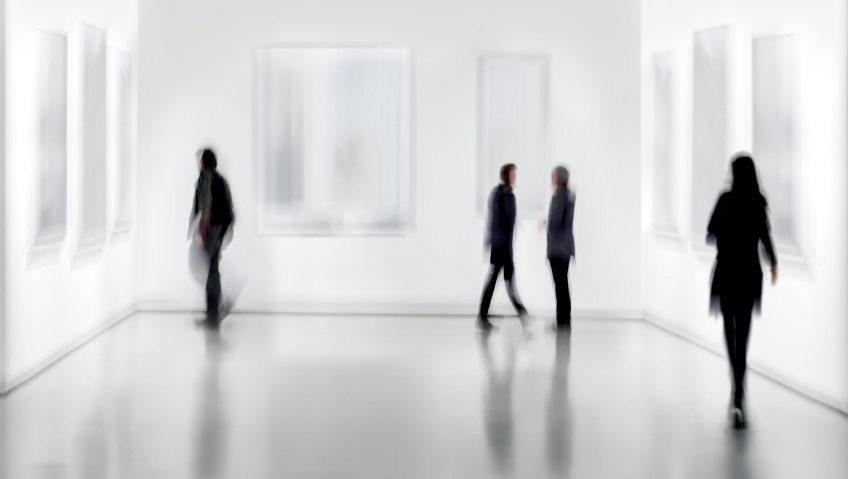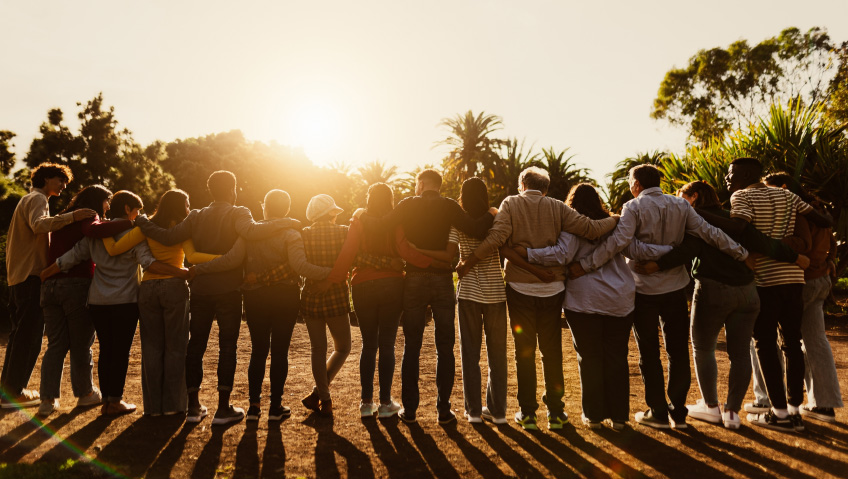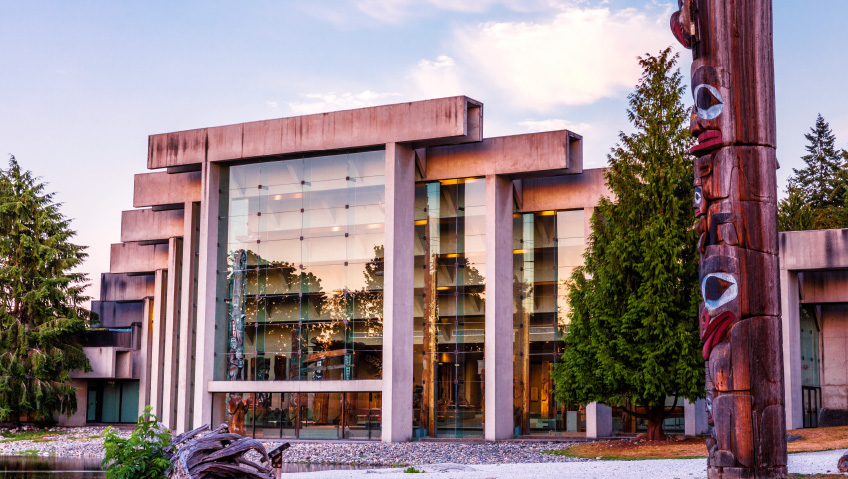“You have to know the past to understand the present.”
-Carl Sagan
Founded in 1947 following World War II during a time of genuine resolve for peace, morality, and humanitarianism, the Canadian Museums Association (CMA) evolved from the demand for a group of experts to represent the industry while embracing diversity, inclusiveness, social responsibility, excellence, and creativity. The number of experts have since grown, along with the number of museums across the country, providing unity and representation for Canadian museums.
Supporting everything from tiny, volunteer-run groups to beloved national institutions, the CMA works for Canada’s thriving museum community and the millions of Canadians whose lives are enhanced by museums. In order to support and maintain these vital spaces, the organization creates and encourages connections, develops professional skills, and pushes for public policies and assistance.
“We were created in response to this required need to bring museums together, to have a voice on a national level, to focus on the importance of museums, advocate for policies and support and also professionalize the sector,” explains Janis Kahentóktha Bomberry, Executive Director and CEO. This has included building skills, creating networking opportunities, and strengthening connections in order to sustain museums moving forward. “The CMA was, at that time, very instrumental in ensuring there was what would become a national museum policy in the country.”
To that end, the CMA does a great deal of advocacy work, aimed not only at government relations but also at ensuring the Canadian public as well as local regions across the country are able to advocate for the importance of museums and why they’re crucial to Canada’s cultural fabric.
“Museums play such a pivotal role in communities,” stresses Bomberry. “They’re centres and hubs where a community can come together to learn about not only our past, but our contemporary realities, and hear stories of diverse voices. We’re really trying to inform our government officials of their importance.” In nearly every riding across this country there is a museum to be found, she adds, and it is the responsibility of MPs (Members of Parliament) to be familiar with these outstanding places of learning.
“Museums really do provide a benefit to Canadians,” Bomberry says. “Studies like the GLAM (Galleries, Libraries, Archives, and Museums) study in 2019 show for every dollar spent, the museum actually produces $4 in value from an economic sense. We see that people who visit and go to museums are one of the tourism drivers in every community. They are really places to gather.”
While there is support for the continuing presence of museums across the country, Bomberry finds she still needs to convey their importance on an ongoing basis. “Every time we talk to someone, they’re very aware of and understand the importance of museums, but they’re always looking for that data piece,” she says. “They want to know more data.”
This data could include museum benefits, the number of museum visitors a year across the country, the various types of programs offered, and the different types of exhibitions. All this information is essential to future success and the CMA strives to capture as much as it can.
Data can also illuminate the role museums play in educating the public via the pieces, artifacts, exhibits, and programs available. “From studies we’ve seen recently, Canadians do trust museums as places of learning and places of information, but I think museums aren’t totally immune to that mistrust factor,” adds Bomberry. “We’re very aware that we hold the trust, but that that can easily be taken away from us. We try to advocate with our government as well that most Canadians do trust museums and they trust the information being provided to them.”
Unfortunately, a current culture of wariness has been on the rise for a variety of reasons, subsequently raising concerns across the industry as a whole. “I think we’re in an era where there are a lot of questions around mistrust,” Bomberry says. “I think it was not something we would have considered five years ago, but it’s something museums are very conscious of now. We want to still be those centres of trust.”
EDIA (Equity, Diversity, Inclusion, and Accessibility) is another area the CMA strives to continually advance. “We look at how to embed these into our governance and operation structures within museums,” says Bomberry. “Not necessarily taking it as a separate lens, but looking at how to provide equitable workspaces, places that are accessible to all community members, and ensuring there’s inclusiveness within not only operations, but governance.”
With the number of changes taking place in the United States right now, including the dismantling of DEI (Diversity, Equity, and Inclusion) in particular, is CMA worried about that affecting how the organization functions both now and in the future?
“I think if you don’t make it a separate thing and if you have it as part of every day, it’s worked into your organizational values and mission,” says Bomberry. “As long as it’s not a separate piece, it just will be part of the way in which we work. If it can be taken out so easily, it means it wasn’t ingrained within the institution’s values.”
In addition to EDIA, Truth and Reconciliation is another area of great care and concern within the CMA. During the 1950s, when the public relations sector was gaining traction, there came a greater emphasis on the necessity of expertly presenting artifacts, leading to display concerns that persist to this day. Exhibitions were pushed to change their character and museum designers needed to learn new abilities, resulting in the art of exhibition recently gaining prominence in the national discourse.
The Truth and Reconciliation Commission’s Call to Action #67 in 2015 called on the CMA to submit a report and recommendations as part of a nationwide review of museum policies and their alignment with the UN Declaration on the Rights of Indigenous Peoples (UNDRIP). Since their inception, museums have been a component of the colonial endeavour and today strive to address how to showcase their work as community institutions while simultaneously acknowledging that fact and embracing the chance to support Indigenous self-determination.
“In response to the Truth and Reconciliation Commission’s call up to action #67, we were named to review policies around museums, looking at what that means and what changes need to happen,” Bomberry says.
Museums are colonial by nature in most instances, she adds. The Move to Action report outlined 30 recommendations and 10 standards for how to support Indigenous self-determination within a museum that can be achieved through governance, operations, and engagement with Indigenous communities, looking at it through repatriation specifically. “We really tried to break it down so people could digest the different pieces of how to do this work—it’s a lot of work. It’s not easy, but we were able to produce a number of toolkits,” Bomberry shares.
This includes a toolkit for small museums that addresses how to progressively look at reconciliation, how to assess governance, how to produce a report card on status when it comes to supporting Indigenous self-determination within governance structures, and how to conduct community engagement work.
Along with the number of toolkits and resources on its website—including an international repatriation guide launched last fall—the CMA also provides a successful seven-week web course now going into its third iteration in the spring. This course offers an intake of about 60 museum professionals from across the country that has seen participation of not only staff, but also board members, a crucial component in ensuring changes are made within the industry. “It was really very heartwarming to see as many board members as we had in the course last year,” says Bomberry.
Additionally, the CMA aims to provide professional development pieces every year, bringing people together, with this year’s symposium taking place in Victoria, BC and a national conference happening in 2026. “We do a lot of these learning opportunities from a national lens, and we try to take it across the country.”
As the organization strives to educate and inform, one of its biggest challenges remains the uncertainty around funding. Federally, funding is project-based, so museums can’t necessarily apply for operating funds, and with only one program available, it’s difficult to sustain operations under a project-to-project funding model.
“We’re also in a time where there are a lot of pressures on keeping up with the changing society around us,” Bomberry adds. “How do we remain relevant in the eyes of a very fast-changing society? Even with levels of uncertainty, though, I think a lot of museums are able to be very pragmatic and can pivot when required. And we’ve seen that. We’ve seen evolutions within museums.”
This evolution includes more community engagement, audience development, looking at issues through a different lens, and digitization, all of which happened during COVID when many museums, even though they had to shut their doors, were still able to deliver programming virtually, options still available today.
“We’re seeing people return to going in-person, but maybe not in the same numbers as before COVID or spending in the same way,” says Bomberry. “That’s a concern, obviously. We’ve also seen drops in levels of sponsorship and donations since COVID, but that’s maybe generally across the not-for-profit sector.”
Regardless of these challenges, the CMA continues to envision stronger museums through engaged citizens, along with organizational boldness, courage, accountability, and professionalism.
Bomberry adds that CMA is seeing “very interesting exhibitions” coming out of museums, all of which require intensive research that isn’t always realized by patrons. “A lot of people see the exhibitions and don’t understand the amount of research that goes into the creation of the work seen on the walls in the museum,” she says. “The research happening is just as crucial, and maybe we don’t share that enough about how much time and effort it takes, but it’s interesting to see. Museums are doing some outstanding collaborative and partnership work and it’s really wonderful to see.”






